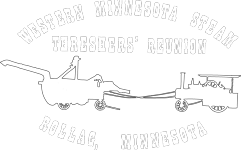Credit where credit is due. Who did I record talking to me in this video here, and would he like source credit in this video clip of how Otto engines work?
http://en.wikipedia.org/wiki/Otto_engine
(The video works best with the Firebox web browser.)
This article has so far been just a redirect to the "four stroke engine" article, but really the stationary engines designed by Nicolaus Otto deserve a encyclopedia page of their own so I'm taking it over to start a page dedicated to the Otto engines. I'll be adding more video here later.
I'm sure there are people who know way more about these stationary engines than me. Anyone can edit wikipedia articles, so feel free to edit the page and add any additional technical info you like. (Create an account if you want editing credit, or just edit without logging in to do it anonymously.)
- Dale
http://en.wikipedia.org/wiki/Otto_engine
(The video works best with the Firebox web browser.)
This article has so far been just a redirect to the "four stroke engine" article, but really the stationary engines designed by Nicolaus Otto deserve a encyclopedia page of their own so I'm taking it over to start a page dedicated to the Otto engines. I'll be adding more video here later.
I'm sure there are people who know way more about these stationary engines than me. Anyone can edit wikipedia articles, so feel free to edit the page and add any additional technical info you like. (Create an account if you want editing credit, or just edit without logging in to do it anonymously.)
- Dale



